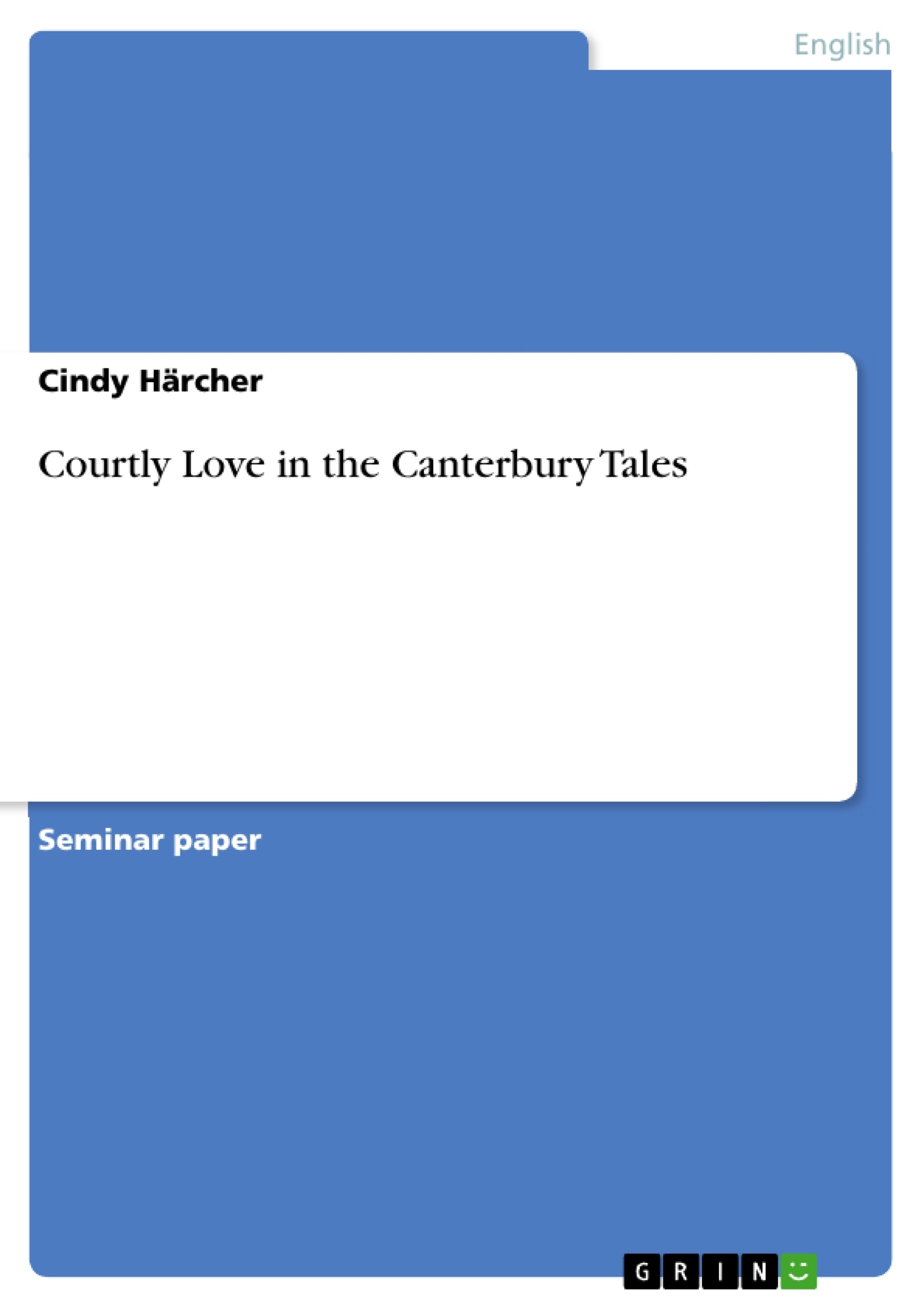Courtly love embraces a beautiful lady, married or unobtainable, who was the object of love for a knight. In general courtly love was secret and between man and woman of noble status and it was not practiced between husbands and wives. Such relationships did not exist in real medieval life. Marriages were mostly arranged and women were seen as property to their husbands. It was more an “available fiction which informed the cultural climate, much as the wider conventions of chivalry did” (Rudd 2001:33).
This is a relatively vague definition of the topic of courtly love and it only summarizes the most important points. This paper will work out the origins and the meaning of courtly love more intensive, watching its first origins and its appearance in the Romance of the Rose, and it will mention and describe every important characteristic. These characteristics will be a guideline to show Chaucer’s treatment of the topic in his work The Canterbury Tales. Elements of courtly love appear in the Prologue, the Knight’s Tale, the Merchant’s Tale, and in the Franklin’s Tale. These elements will be shown and explained.
Finally a conclusion will summarize the most important points.
Inhaltsverzeichnis (Table of Contents)
- Introduction
- The origins and meaning of courtly love
- First origins of courtly love
- Courtly love in the Romance of the Rose
- Elements of courtly love in the Canterbury Tales
- The Prologue
- The Knight's Tale
- The Merchant's Tale
- The Franklin's Tale
- Conclusion
Zielsetzung und Themenschwerpunkte (Objectives and Key Themes)
This paper aims to explore the origins and meaning of courtly love, examining its initial development and its manifestation in the Romance of the Rose. Subsequently, it analyzes how Chaucer incorporates elements of courtly love into his Canterbury Tales, focusing on specific tales like the Prologue, the Knight's Tale, the Merchant's Tale, and the Franklin's Tale.
- Origins and development of courtly love
- Influence of troubadours and medieval society
- Courtly love in the Romance of the Rose
- Courtly love in Chaucer's Canterbury Tales
- Analysis of specific tales within the Canterbury Tales
Zusammenfassung der Kapitel (Chapter Summaries)
The introduction provides a general overview of courtly love, emphasizing its connection to chivalry and its idealization of love between a knight and a beautiful, often unattainable lady. It highlights the contrast between courtly love and the realities of medieval marriage, emphasizing the fictional nature of this concept.
Chapter two delves into the origins of courtly love, tracing its roots to the eleventh-century south of France and the poetry of the troubadours. It examines the role of influential women, such as Eleanor of Aquitaine and Marie of Champagne, in shaping and disseminating these ideas. The chapter further explores the influence of Chrétien de Troies' romances and the significance of Andreas Capellanus's De Arte Honeste Amandi, which defines and codifies the principles of courtly love.
Chapter three focuses on the presence of courtly love elements in Chaucer's Canterbury Tales. It examines how these elements are presented in the Prologue and in specific tales such as the Knight's Tale, the Merchant's Tale, and the Franklin's Tale.
Schlüsselwörter (Keywords)
This paper focuses on courtly love as a literary theme, exploring its origins, development, and manifestation in the works of troubadours, Chrétien de Troies, and Chaucer. Key terms include courtly love, chivalry, medieval society, Romance of the Rose, Canterbury Tales, troubadours, Eleanor of Aquitaine, Marie of Champagne, Andreas Capellanus, De Arte Honeste Amandi, and specific tales from the Canterbury Tales.
- Citar trabajo
- Cindy Härcher (Autor), 2011, Courtly Love in the Canterbury Tales, Múnich, GRIN Verlag, https://www.grin.com/document/194020




